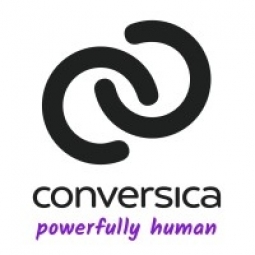Technology Category
- Wearables - Augmented Reality Glasses, Headsets & Controllers
- Wearables - Virtual Reality Glasses, Headsets & Controllers
Applicable Industries
- Consumer Goods
- Oil & Gas
Applicable Functions
- Sales & Marketing
Use Cases
- Autonomous Robots
- Virtual Reality
Services
- Testing & Certification
- Training
About The Customer
Epson America, Inc., founded in 1975, is the U.S. affiliate of Japan-based Seiko Epson Corporation. The company is a global technology leader with a product lineup that includes inkjet printers, digital printing systems, 3LCD projectors, smart glasses, sensing systems, and industrial robots. Epson America is dedicated to driving innovations and exceeding customer expectations. The company is the North American headquarters for the global technology leader and, while it started as a consumer company, a large part of the business is the commercial products groups. Epson America generates leads via various channels and these activities generate approximately 40,000 to 60,000 leads each year.
The Challenge
Epson America, a global technology leader, was facing challenges in standardizing and optimizing lead outreach and communication. The company generates leads through various channels including its website, trade shows, direct mail, email marketing, social media, print advertising, online banner advertising, and a brand awareness campaign. These activities generate approximately 40,000 to 60,000 leads each year. However, the company was struggling with the issue of sales representatives showing disinterest in leads that did not align with their named accounts, as their remuneration was based on sales on named accounts, not on leads sent to them. This led to a need for a solution that could effectively engage and qualify leads, freeing up Sales Reps to close more business.
The Solution
Epson America turned to Conversica AI Assistants for a solution. Conversica AI Assistants use human-like, two-way email conversations to automatically engage and qualify leads. Epson decided to test this solution with the commercial group handling projectors and named their Conversica virtual team member Rachel. The main goal of the program was to ensure that Rachel gave prospects and customers the attention they needed and appropriately handled communications with them. Through Rachel’s efforts, Epson learned how best to nurture prospects, including the fact that they need to be touched, on average, six to eight times before they respond and that they are more responsive if they are emailed at the times they prefer. Rachel was also able to spot concerns in emails that were then passed directly to a dealer or internal service to fix potential problems. In addition, Rachel was able to uncover additional sales opportunities.
Operational Impact
Quantitative Benefit

Case Study missing?
Start adding your own!
Register with your work email and create a new case study profile for your business.
Related Case Studies.

Case Study
Taking Oil and Gas Exploration to the Next Level
DownUnder GeoSolutions (DUG) wanted to increase computing performance by 5 to 10 times to improve seismic processing. The solution must build on current architecture software investments without sacrificing existing software and scale computing without scaling IT infrastructure costs.
.png)
Case Study
Improving Vending Machine Profitability with the Internet of Things (IoT)
The vending industry is undergoing a sea change, taking advantage of new technologies to go beyond just delivering snacks to creating a new retail location. Intelligent vending machines can be found in many public locations as well as company facilities, selling different types of goods and services, including even computer accessories, gold bars, tickets, and office supplies. With increasing sophistication, they may also provide time- and location-based data pertaining to sales, inventory, and customer preferences. But at the end of the day, vending machine operators know greater profitability is driven by higher sales and lower operating costs.

Case Study
Remote Wellhead Monitoring
Each wellhead was equipped with various sensors and meters that needed to be monitored and controlled from a central HMI, often miles away from the assets in the field. Redundant solar and wind generators were installed at each wellhead to support the electrical needs of the pumpstations, temperature meters, cameras, and cellular modules. In addition to asset management and remote control capabilities, data logging for remote surveillance and alarm notifications was a key demand from the customer. Terra Ferma’s solution needed to be power efficient, reliable, and capable of supporting high-bandwidth data-feeds. They needed a multi-link cellular connection to a central server that sustained reliable and redundant monitoring and control of flow meters, temperature sensors, power supply, and event-logging; including video and image files. This open-standard network needed to interface with the existing SCADA and proprietary network management software.

Case Study
Refinery Saves Over $700,000 with Smart Wireless
One of the largest petroleum refineries in the world is equipped to refine various types of crude oil and manufacture various grades of fuel from motor gasoline to Aviation Turbine Fuel. Due to wear and tear, eight hydrogen valves in each refinery were leaking, and each cost $1800 per ton of hydrogen vented. The plant also had leakage on nearly 30 flare control hydrocarbon valves. The refinery wanted a continuous, online monitoring system that could catch leaks early, minimize hydrogen and hydrocarbon production losses, and improve safety for maintenance.









